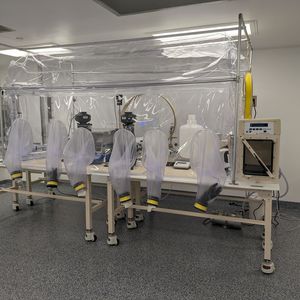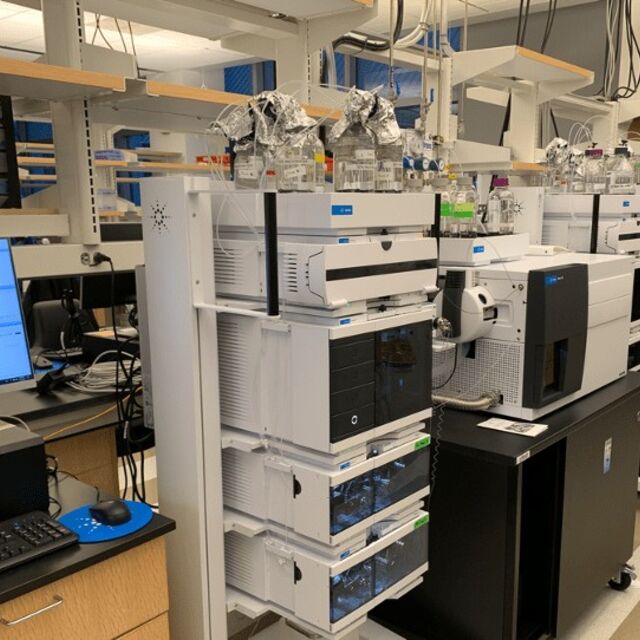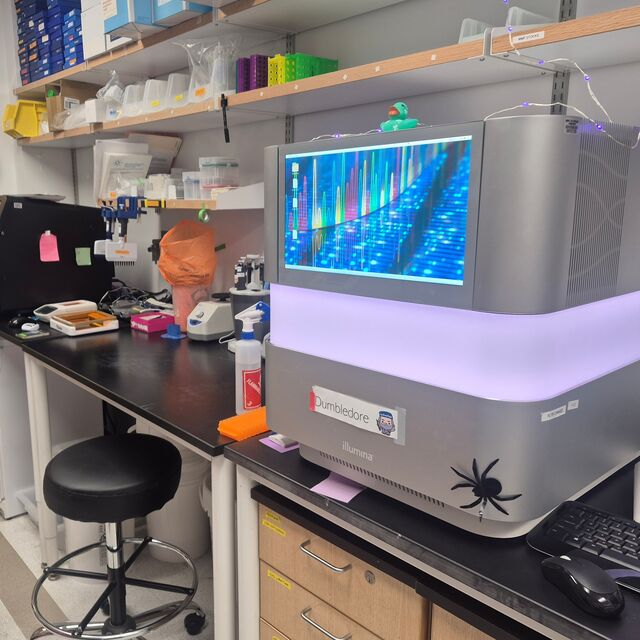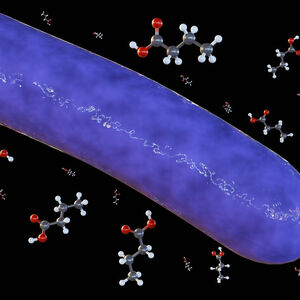
The Duchossois Family Institute was established in 2017 with the goal of enhancing human health by investigating the microbiome and its impact on the immune system. Technical, bioinformatic, and computational advances have enabled us to precisely identify and characterize the microbes colonizing humans and other mammals. Translating laboratory and experimental discoveries into clinical therapies that enhance the health of individuals and human populations is a major challenge. The DFI is working with laboratory investigators and clinicians to correlate microbiome compositions with disease susceptibility or resistance, with the goal of identifying targetable mechanisms to prevent or ameliorate disease. To accelerate the development of microbiome-targeting therapeutics, the DFI has established core facilities, assembled teams of investigators, and developed manufacturing capacity to conduct clinical trials to enhance health by optimizing microbiome compositions and functions.
The microbiome’s impact on human health is widely recognized and well-established. The DFI and investigators at the University of Chicago are excited to be leading the way into a new era of enhancing health by microbiome optimization.
MARCO Trial
Launched October 2025, focused on improving recovery rates in people with severe liver disease using live biotherapeutics manufactured in our in-house cGMP Facility.
cGMP Facility
Our cGMP facility features two cleanroom suites dedicated to the production of live biotherapeutic products (LBPs) intended for phase 1B clinical trials. These LBPs are derived from bacterial strains maintained in our Symbiotic Bacterial Strain Bank.
DFI Host-Microbe Metabolomics Facility
The Duchossois Family Institute (DFI) Host-Microbe Metabolomics Facility (HMMF) features state of the art mass spectrometry based metabolomic capabilities in order to elucidate the role metabolites play in human health and disease. We provide targeted panels of metabolites that will be measured from various organisms and sample types and include amino acids, organic acids, tryptophan catabolites, neurotransmitters, carbohydrates, sugar phosphates, central carbon metabolism intermediates, fatty acids, nucleotides, bile acids and more.
DFI Microbiome Metagenomics Facility
The DFI Microbiome Metagenomics Facility (MMF) provides bacterial 16S ribosomal RNA gene and shotgun metagenomic sequence analyses on intestinal contents and other samples containing complex microbial populations. The MMF works with investigators to analyze microbiota sequence data from experimental and clinical samples. Analysis tools are available to classify bacterial sequences down to the genus level (and to the species level when possible) to determine both community membership and structure. Analyses include graphic visualization of the bacterial composition of individual samples and determination of microbial population diversity within and between samples.
Laboratories in the DFI
Comstock Lab
Laurie Comstock's lab studies the biology of a predominant order of bacteria of the human intestine, the Bacteroidales.
Light Lab
The Light Lab focuses its research on the role of the gut microbiome in human health and the basis and function of specialized bioelectrochemical activities across diverse bacteria.
Mimee Lab
The Mimee Lab develops strategies to engineer the microbiome in hopes of achieving precise control of microbiome composition and function in order to improve health and cure disease.
Mukherjee Lab
The overarching goal of the Mukherjee Lab is to understand how bacteria decode and integrate self-generated and environmental stimuli to control transitions between individual and collective behaviors.
Pamer Lab
The Pamer Lab studies interactions between pathogenic and beneficial bacteria and their mammalian hosts.
Raman Lab
Research in the Raman lab is motivated by two central questions: (1) What is the 'wiring diagram' of evolved systems? and (2) Why is the wiring diagram the way it is?












